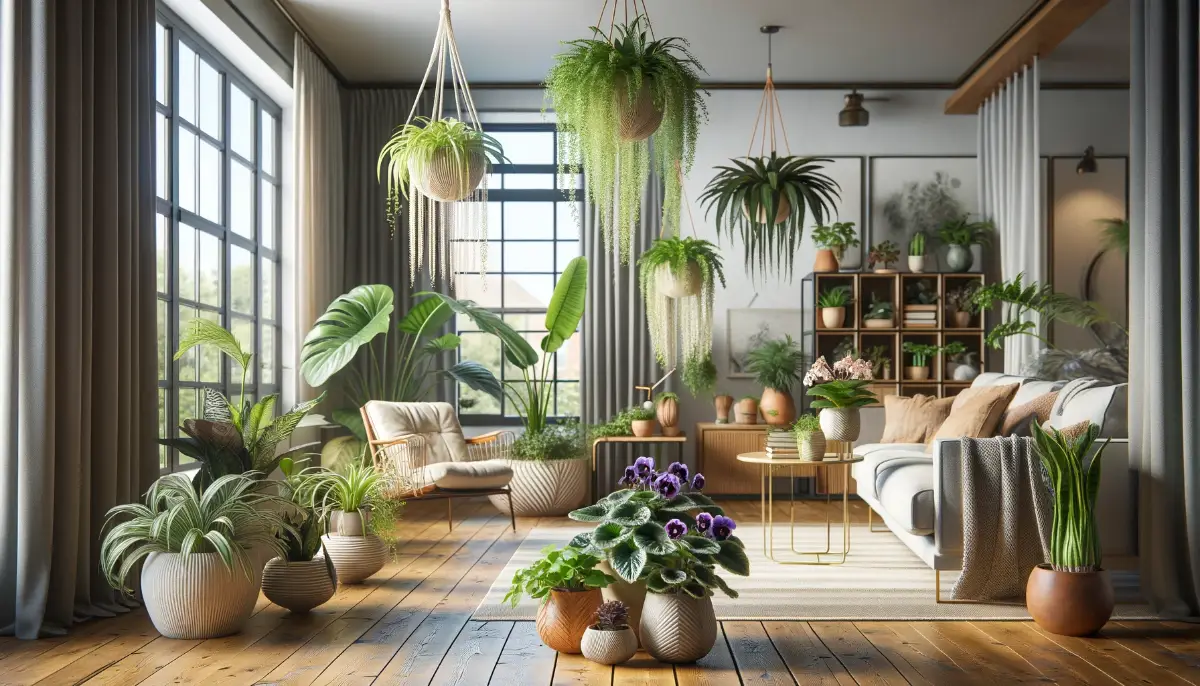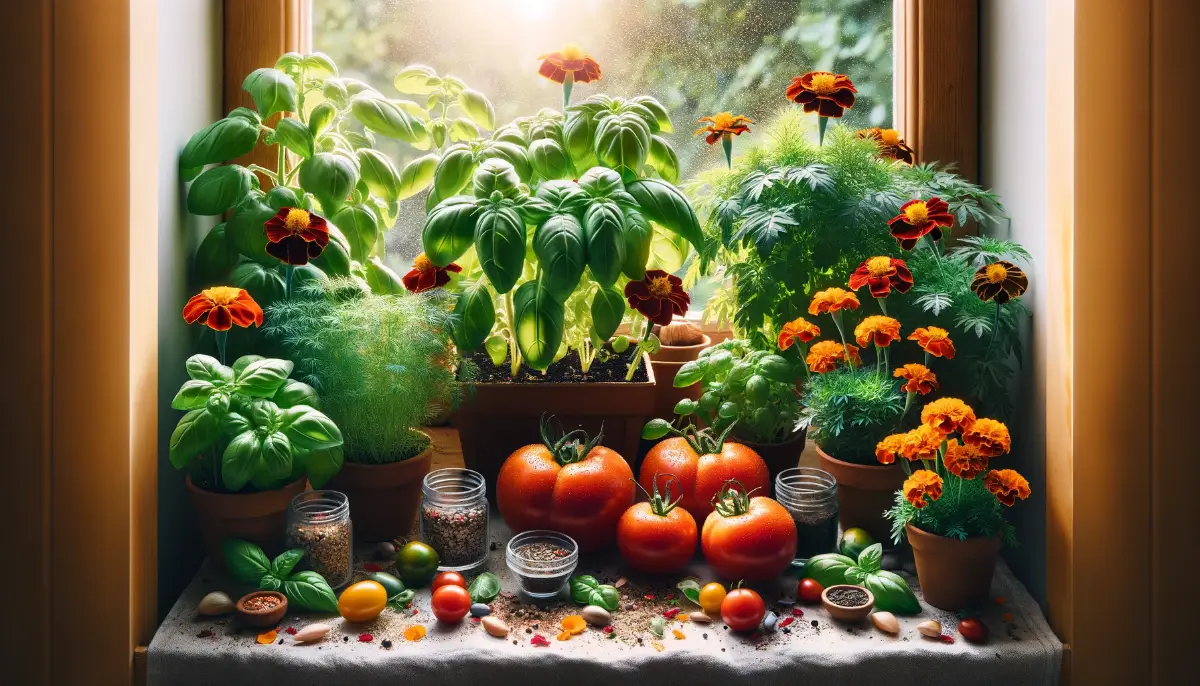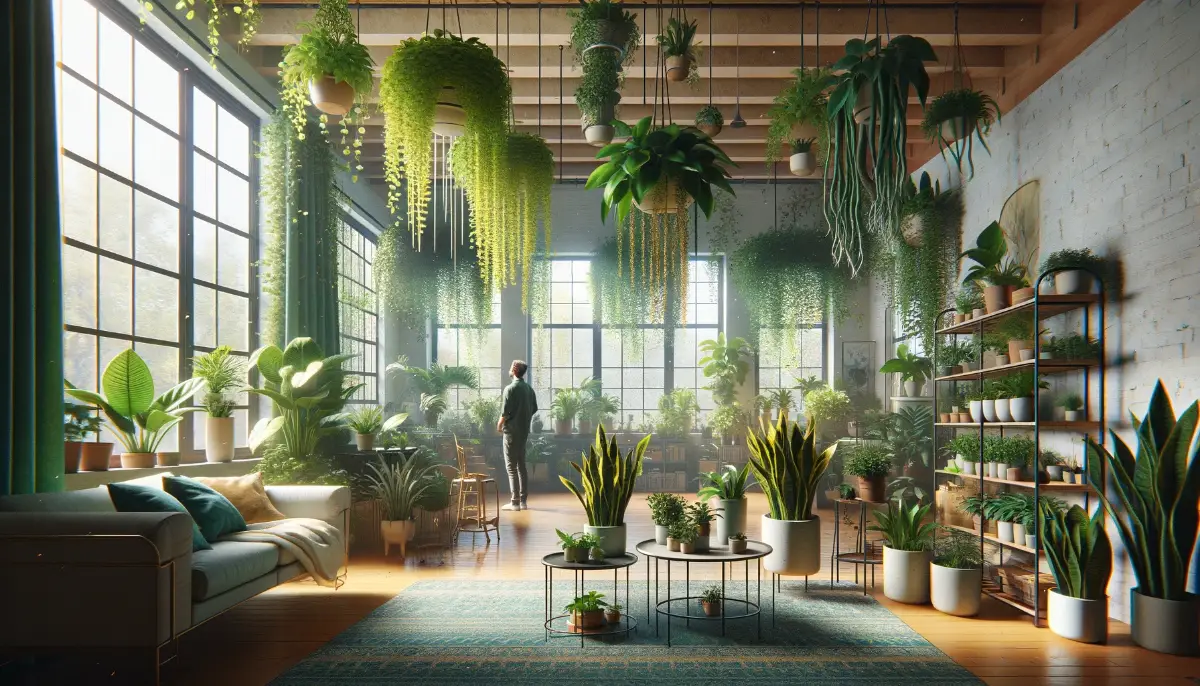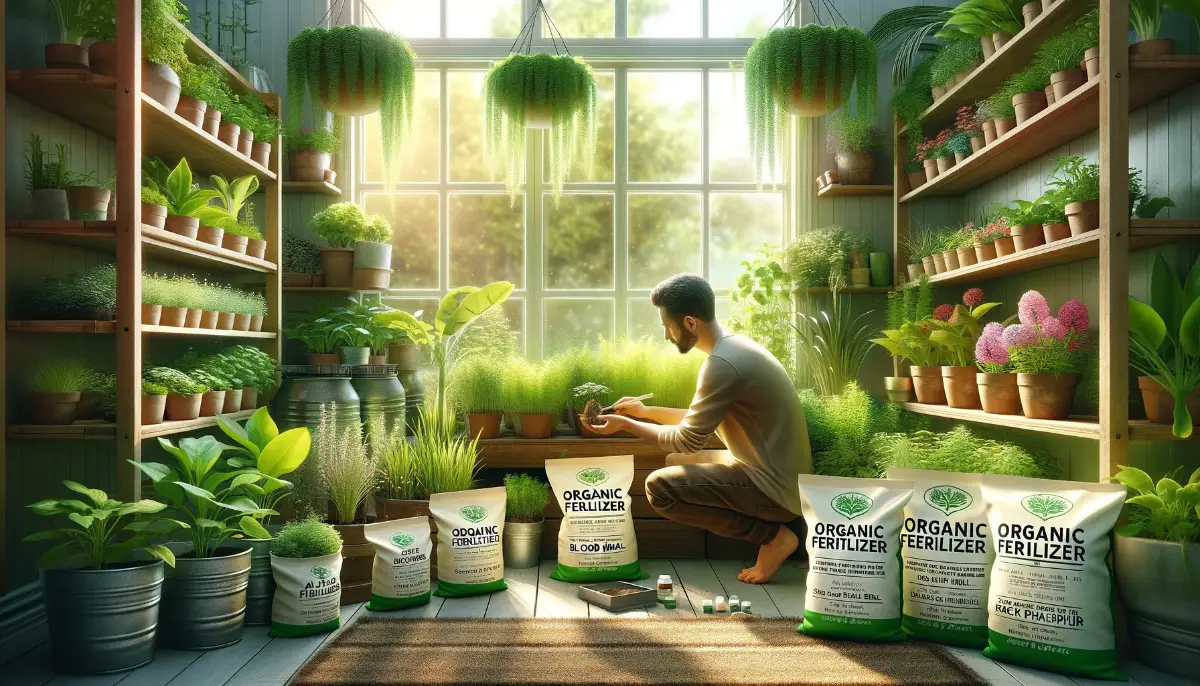Choosing the right plants for your indoor garden is crucial not only for the aesthetic appeal but also for the health and safety of your household. While plants can bring beauty and purify the air inside your home, some may pose risks due to their care requirements or potential hazards.
From those that demand constant temperature control to plants toxic to pets and humans, it’s important to make informed decisions. In this guide, we explore indoor plants that are best avoided and provide safe alternatives.
- Not all plants are suitable for indoor environments due to high maintenance needs or toxicity.
- Pets and children are particularly at risk from certain plants.
- Research and careful selection can help create a safe and thriving indoor garden.
Commonly Chosen Indoor Plants and Their Drawbacks
Zebra Plant
The Zebra Plant, with its striking striped leaves, might catch your eye. However, it requires constant temperature control, failing which it quickly deteriorates. Its need for high humidity and specific watering schedules makes it a challenging choice for casual gardeners.
Pothos
While Pothos is celebrated for its air-purifying qualities and ease of care, pet owners should beware. This plant is toxic to cats and dogs, causing symptoms like vomiting, irritation, and difficulty swallowing if ingested.
Sago Palm
Despite its lush, tropical appearance, the Sago Palm is highly poisonous to animals. Ingesting even a small amount can lead to severe symptoms, including liver failure in pets. Its toxicity makes it a risky choice for households with furry friends.
Toxic Plants to Pets and Children
Fiddle-Leaf Fig
The Fiddle-Leaf Fig is a popular decor plant, thanks to its large, glossy leaves. However, it’s challenging to maintain, requiring precise light and moisture conditions. Moreover, it’s toxic when ingested, posing a risk to pets and small children.
ZZ Plant
The ZZ Plant is low maintenance and can thrive in low light, making it a favorite among indoor gardeners. However, its leaves and sap contain calcium oxalate crystals, which are toxic upon ingestion and can lead to irritation and swelling of the mouth and digestive tract.
Jerusalem Cherry
Attractive for its bright, cherry-like fruits, the Jerusalem Cherry can be dangerous. All parts of this plant are toxic, especially the berries, which can cause vomiting, diarrhea, and in severe cases, seizures in children and pets.
Plants That Demand High Maintenance
Ctenanthe
The Ctenanthe, known for its stunning leaf patterns, is notoriously difficult to please. Thriving in high humidity, consistent soil moisture, and indirect light, it can quickly succumb to brown leaf edges or drooping leaves if its specific needs aren’t met. This plant is best suited for those willing to invest time and attention into their indoor garden.
Yucca Plant
The Yucca Plant, with its sharp leaves and towering presence, can be a striking addition to your home. However, it’s known to release pollen and sap that can aggravate allergies. Its size and growth pattern also require regular pruning to maintain a manageable shape and prevent it from outgrowing indoor spaces.
Plants with Allergenic Properties
Poinsettias
Poinsettias are a holiday favorite, but they contain compounds that can cause skin irritation upon contact. While not highly toxic, their milky sap can lead to itchiness and discomfort, making them less ideal for households with curious pets and children.
Creating a thriving indoor garden requires more than just choosing plants that look good. Understanding the specific needs and potential hazards of indoor plants can ensure the safety of your household and the health of your garden. By avoiding plants that demand high maintenance or pose risks to pets and children, you can enjoy the benefits of indoor gardening without the drawbacks.
FAQs on The Hidden Dangers of Popular Indoor Plants
What are some safe alternatives to these plants for pet owners?
Spider Plant, Boston Fern, and African Violet are excellent choices for pet owners. They are non-toxic to pets and still add greenery and beauty to your indoor spaces.
How can I determine if a plant is safe for my home environment?
Always research before purchasing a plant. The ASPCA provides a comprehensive list of plants that are non-toxic to pets. Additionally, consider consulting with a local nursery or gardening expert.
Are there any signs to watch out for that indicate a plant is toxic?
While there’s no universal sign that a plant is toxic, symptoms like vomiting, diarrhea, lethargy, or drooling in pets after ingestion may indicate toxicity. For humans, skin irritation or digestive discomfort could suggest a plant is harmful if touched or ingested.
Can plants affect indoor air quality and allergies?
Yes, some plants can improve indoor air quality by removing toxins from the air, such as Spider Plants and Peace Lilies. However, plants like the Yucca can aggravate allergies due to pollen and sap. It’s essential to choose plants that match your health needs and environmental conditions.
How do I deal with pests on indoor plants without harming my pets or children?
Opt for natural pest control methods, such as neem oil or insecticidal soap, which are safer alternatives to chemical pesticides. Always keep the treated plants out of reach until the treatment has dried completely. Regularly inspecting your plants for pests can also help prevent infestations.
What are the signs that a plant is not thriving in its indoor environment?
Common signs include yellowing leaves, drooping or wilting, leaf drop, and stunted growth. These symptoms can indicate issues with watering, light, or other environmental factors. Adjusting the care routine based on the plant’s specific needs can often remedy these problems.
Are there any indoor plants that are particularly good for small spaces?
Yes, plants like the ZZ Plant, Snake Plant, and various types of succulents are great for small spaces due to their compact size and low maintenance requirements. These plants can thrive in limited space while adding greenery and improving air quality.
How can I ensure the safety of my plants during the winter months?
During winter, ensure your plants receive enough light, which may be less than usual. Keep them away from cold drafts and adjust watering schedules as growth slows down. Some plants may benefit from a humidifier in heated homes where the air can become dry.
What should I do if I suspect my pet has ingested a toxic plant?
If you suspect your pet has ingested a toxic plant, contact your veterinarian or the ASPCA Animal Poison Control Center immediately. Provide them with the name of the plant ingested, and follow their advice closely. Quick action is crucial in these situations.
Can repotting a plant affect its health?
Yes, repotting can be stressful for plants, especially if not done correctly. Ensure you choose the right size pot and suitable soil type for the plant. Repotting provides the plant with fresh soil and room to grow, which can ultimately benefit its health if done properly.










